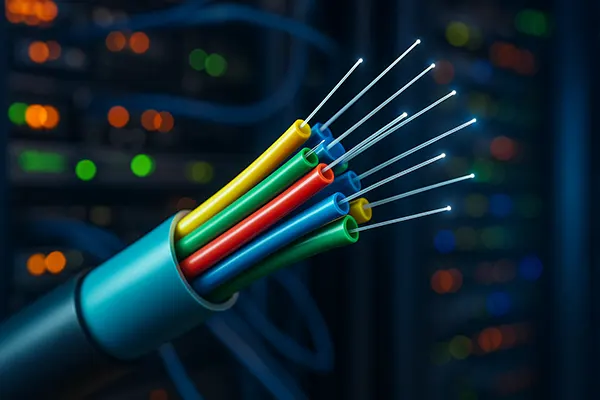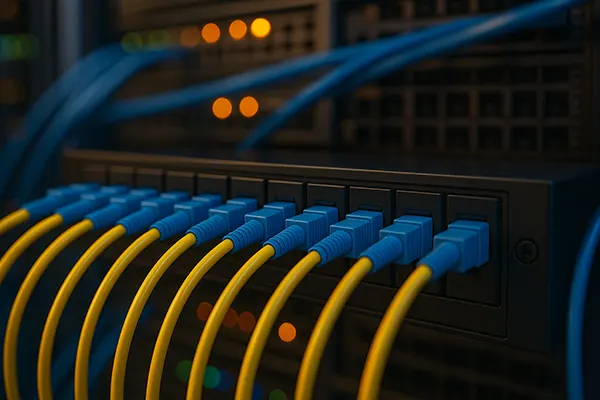Rising Demand for Symmetrical Internet in 2025: Are German Providers Ready?

As the digital economy continues to evolve rapidly, symmetrical internet has emerged as a critical need across both residential and business sectors. With the growth of remote work, high-resolution video conferencing, cloud computing, and real-time collaboration, users are no longer satisfied with traditional broadband that prioritises download speed. Instead, they demand equal upload capacity — and in 2025, this demand has reached a turning point in Germany. The question now is: can local providers meet the soaring expectations for gigabit-level uplink?
Germany’s Growing Dependence on Symmetrical Connections
Over the past two years, symmetrical internet has transformed from a niche offering into a mainstream requirement. In 2025, businesses, particularly SMEs in urban and semi-rural areas, are insisting on upload speeds that match downloads to ensure seamless data transfers, especially with cloud-based services like Microsoft 365, Google Workspace, and real-time backups to services such as AWS and Azure. Home users, especially those involved in live streaming, video production, and gaming, also need the same.
The German federal government’s ongoing push for nationwide gigabit coverage by 2026 includes provisions for symmetrical fibre connections. Projects funded through “Gigabitstrategie 2022” are being fast-tracked, with municipalities encouraged to partner with private fibre providers to deliver full-fibre infrastructure, not just upgraded DSL. However, rollout disparities between regions remain a bottleneck, particularly in Bavaria and parts of Saxony.
Private telecom companies, such as Deutsche Telekom, Vodafone, and 1&1, are racing to adapt. While Deutsche Telekom still relies partly on hybrid copper-fibre networks (FTTC), competitors like Deutsche Glasfaser and GVG Glasfaser are investing in true FTTH (Fibre to the Home) projects that offer up to 1 Gbps both ways, making symmetrical internet a real possibility for more households than ever before.
Why Upload Speeds Matter More Than Ever
In 2025, upload speed is no longer a luxury — it is essential. Hybrid work environments now demand seamless file uploads, video calls, and access to cloud servers, placing symmetrical bandwidth at the forefront of internet quality standards. For instance, uploading large 4K video projects to cloud storage or running a livestream for hours can cripple a household with only 40 Mbps up — despite having 250 Mbps down.
As Germany becomes more digitised, especially in healthcare, education, and remote public services, symmetrical connections allow citizens and institutions to interact in real time without lags. This is especially relevant in telemedicine, where both sides need HD-quality video and rapid data exchange for diagnostics and consultation.
Moreover, the Internet of Things (IoT) and smart home devices rely on consistent two-way data streams. Whether it’s uploading telemetry from solar panels or maintaining a stable connection with security systems, symmetrical connections enhance stability, efficiency, and responsiveness.
Challenges for German ISPs in Scaling Gigabit Uploads
Despite the optimism, German providers face serious hurdles. Infrastructure costs remain a primary concern. Laying fibre underground in densely populated areas is complex and time-consuming, while rural expansions require massive investment. According to BREKO, the German Broadband Association, only around 36% of households had access to gigabit-capable fibre by the end of 2024, with a projection of reaching 50% by mid-2025.
Another issue is legacy infrastructure. Many German ISPs still operate on VDSL lines, which inherently limit upload speeds. Upgrading to full FTTH is the only scalable solution, but it requires regulatory support and public-private coordination. Moreover, not all users are aware of the difference between hybrid and symmetrical fibre, making education and marketing crucial for adoption.
On the technical side, achieving consistent gigabit upload capacity requires robust backbone networks and peering agreements. ISPs must also upgrade their home routers and customer premises equipment (CPE) to support higher throughputs, particularly in multi-device households using Wi-Fi 6 or 6E technologies.
The Role of Government and Regulation
The German government, through the Federal Ministry for Digital and Transport, has launched incentives for private-public partnerships to accelerate fibre rollouts. The “Graue Flecken” subsidy programme has been extended into 2025 to support underserved areas — known as “grey spots” — where there is no current gigabit-level service.
Regulatory bodies are also pushing for open-access models. This means infrastructure built by one provider should be accessible to competitors, fostering competition and preventing monopolies. These policies are critical in ensuring that symmetrical internet reaches not just cities, but also towns and villages where market incentives alone are weak.
Furthermore, Germany’s Digital Strategy 2030 includes commitments to reduce the digital divide, promote digital sovereignty, and integrate fibre infrastructure with 5G networks, ensuring cohesive development of both fixed and mobile high-speed connectivity.

Are Providers Ready for the Symmetrical Shift?
Some German ISPs are clearly leading the way. Deutsche Glasfaser plans to pass over 6 million households with FTTH by the end of 2025, offering symmetrical 1 Gbps plans. Meanwhile, regional players such as NetCologne and M-net are leveraging municipal networks to deliver fibre services to both homes and small businesses at competitive rates.
Vodafone Germany, though traditionally focused on cable internet, is investing in fibre through its partnership with Altice and will start offering symmetrical fibre in several metro areas. Additionally, 1&1 has ramped up its fibre offerings through the acquisition of Versatel’s business network infrastructure, further pushing symmetrical packages.
Consumer awareness is also on the rise. According to a 2025 survey by Bitkom, over 62% of users now consider upload speed as important as download speed when choosing a provider. This indicates a significant shift in market expectations, prompting more ISPs to rethink their offerings and transition to symmetrical fibre connectivity as a standard rather than a premium option.
What Comes Next in the Fibre Race?
The next milestone for Germany is not just universal broadband access, but universal symmetrical gigabit connectivity. Providers that cannot meet these expectations will likely lose out in competitive urban markets where fibre-first challengers are gaining ground rapidly.
Consumer watchdogs and digital rights groups are advocating for clear labelling of symmetrical versus asymmetrical plans, so users can make informed decisions. This also pressures providers to be transparent and consistent in their advertised speeds and performance.
Looking ahead, symmetrical fibre will become the foundation of Germany’s digital transformation. For providers, readiness is not just about infrastructure — it’s about meeting evolving digital lifestyles. In this race, being future-proof means being symmetrical.
